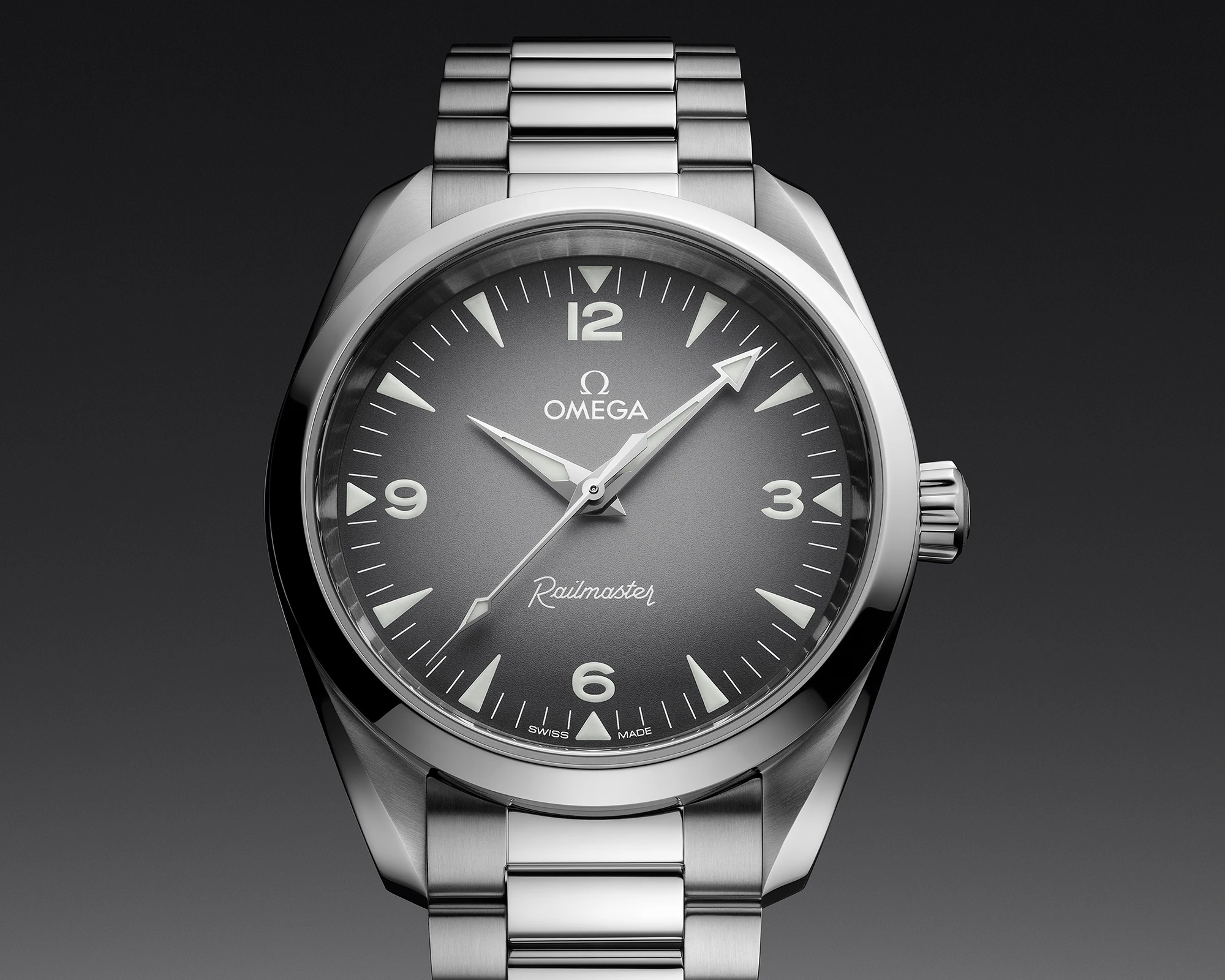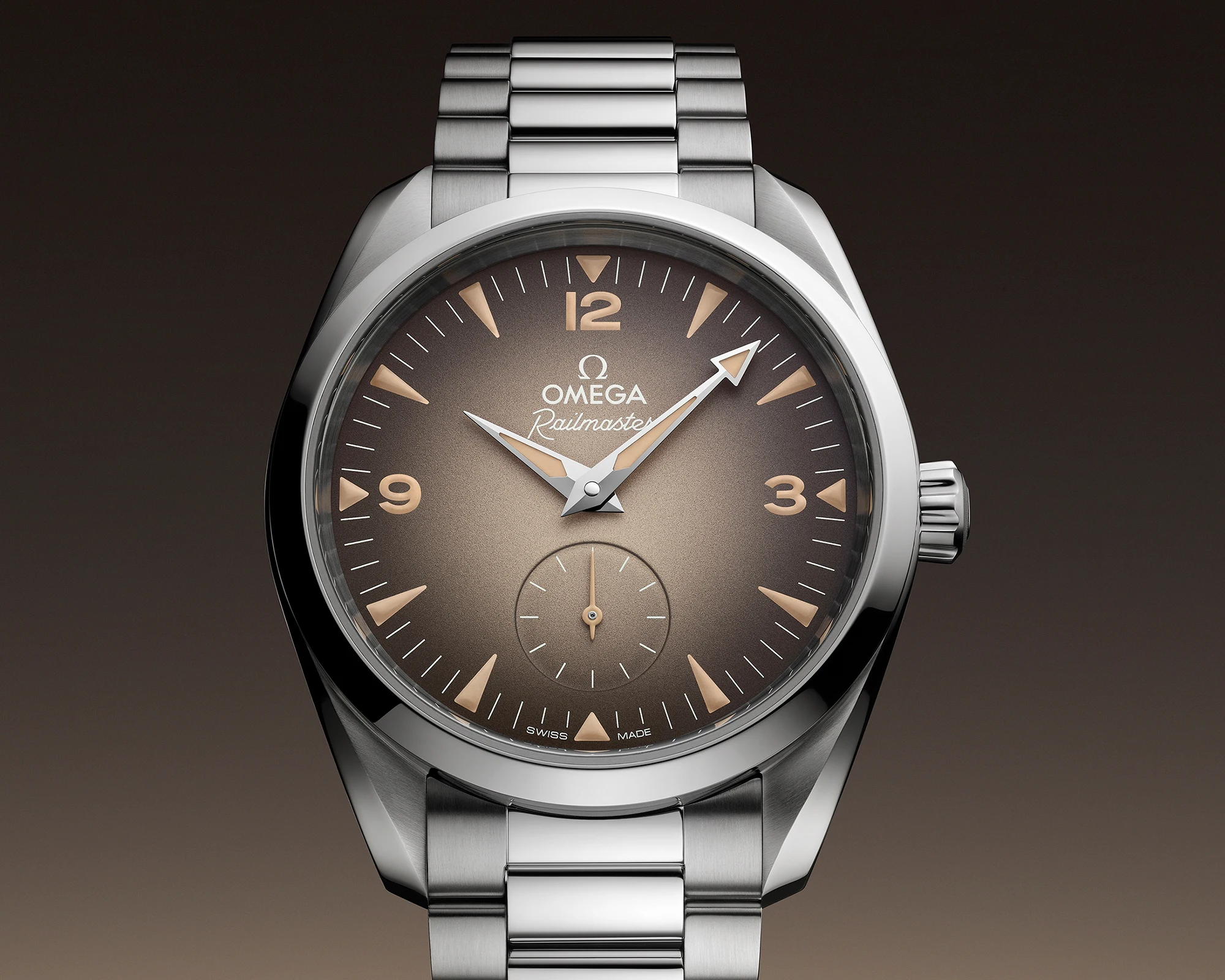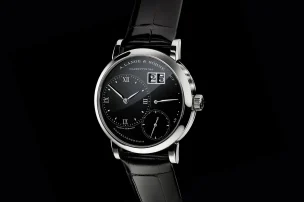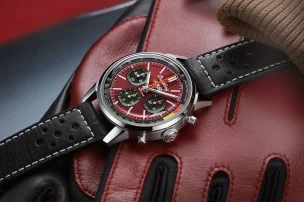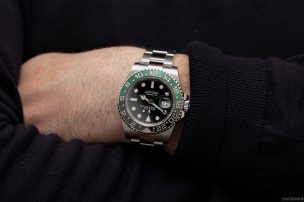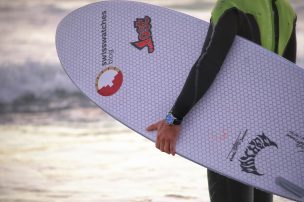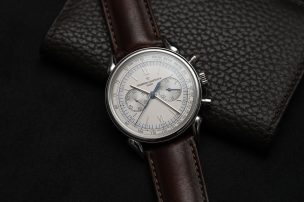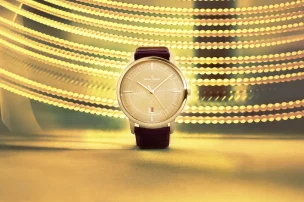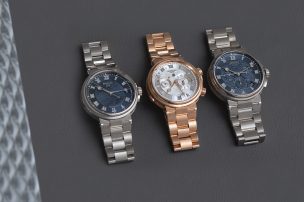
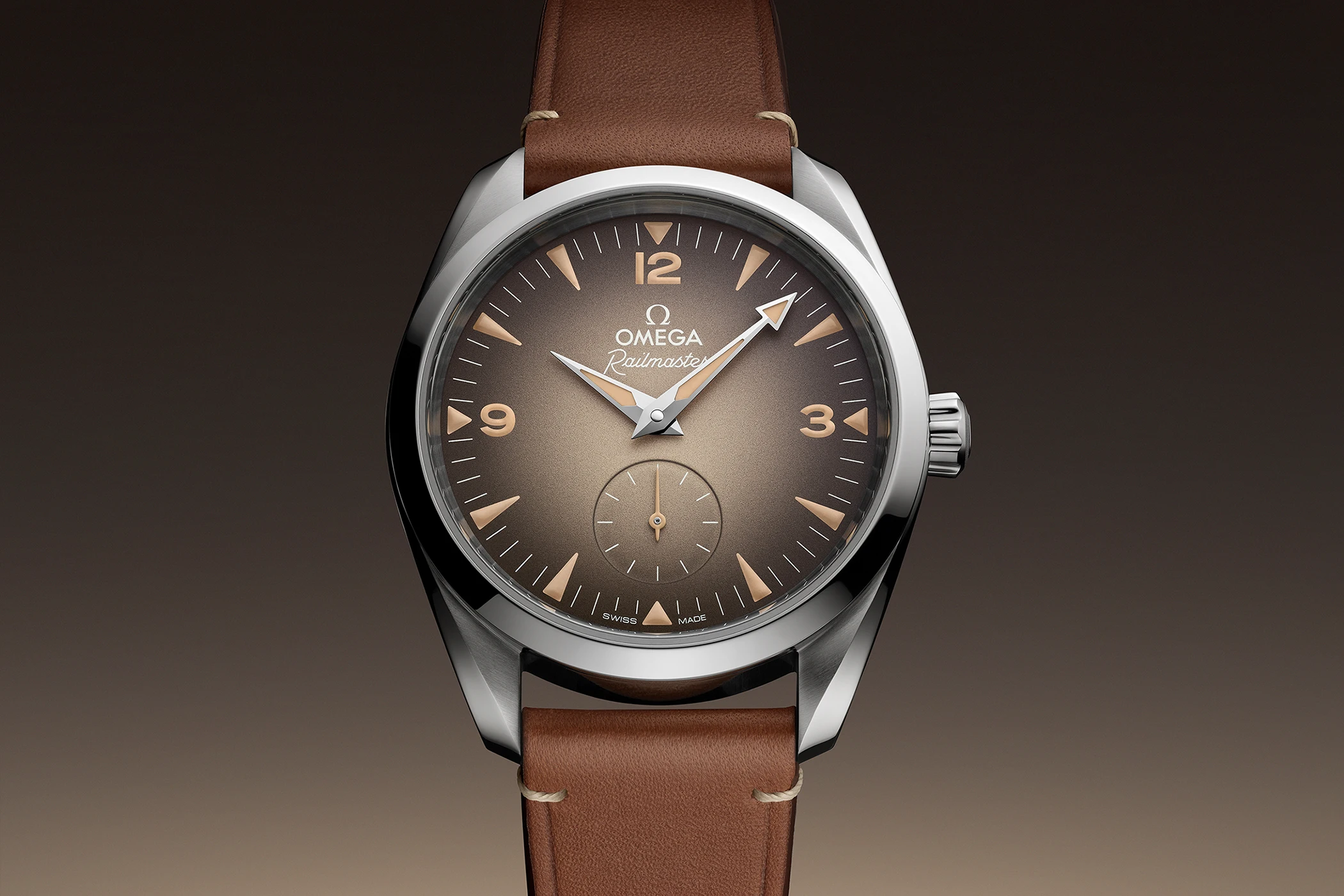
Omega Revives the Railmaster: A Look Back at the History of an Underrated Classic
Originally introduced as part of Omega’s legendary toolwatch trilogy alongside the Speedmaster and Seamaster 300, the Railmaster was intended to rival the Rolex Milgauss. Yet, it never truly caught on and was discontinued after only six years in production. Nevertheless, the Railmaster is a watch that uniquely combines significant historical relevance with a harmonious design – a foundation that makes it ideal for modern reinterpretation. With the latest expansion of Omega’s collection, that potential is finally being realised. Following reissues in 2003 and 2017, Omega is making another attempt to revitalise a design long cherished by collectors. The new Railmaster models are available in two dial colours: grey and beige. A fitting occasion not only to present the new additions, but also to revisit the story of a model that has often been overlooked in the shadow of the Speedmaster and Seamaster.
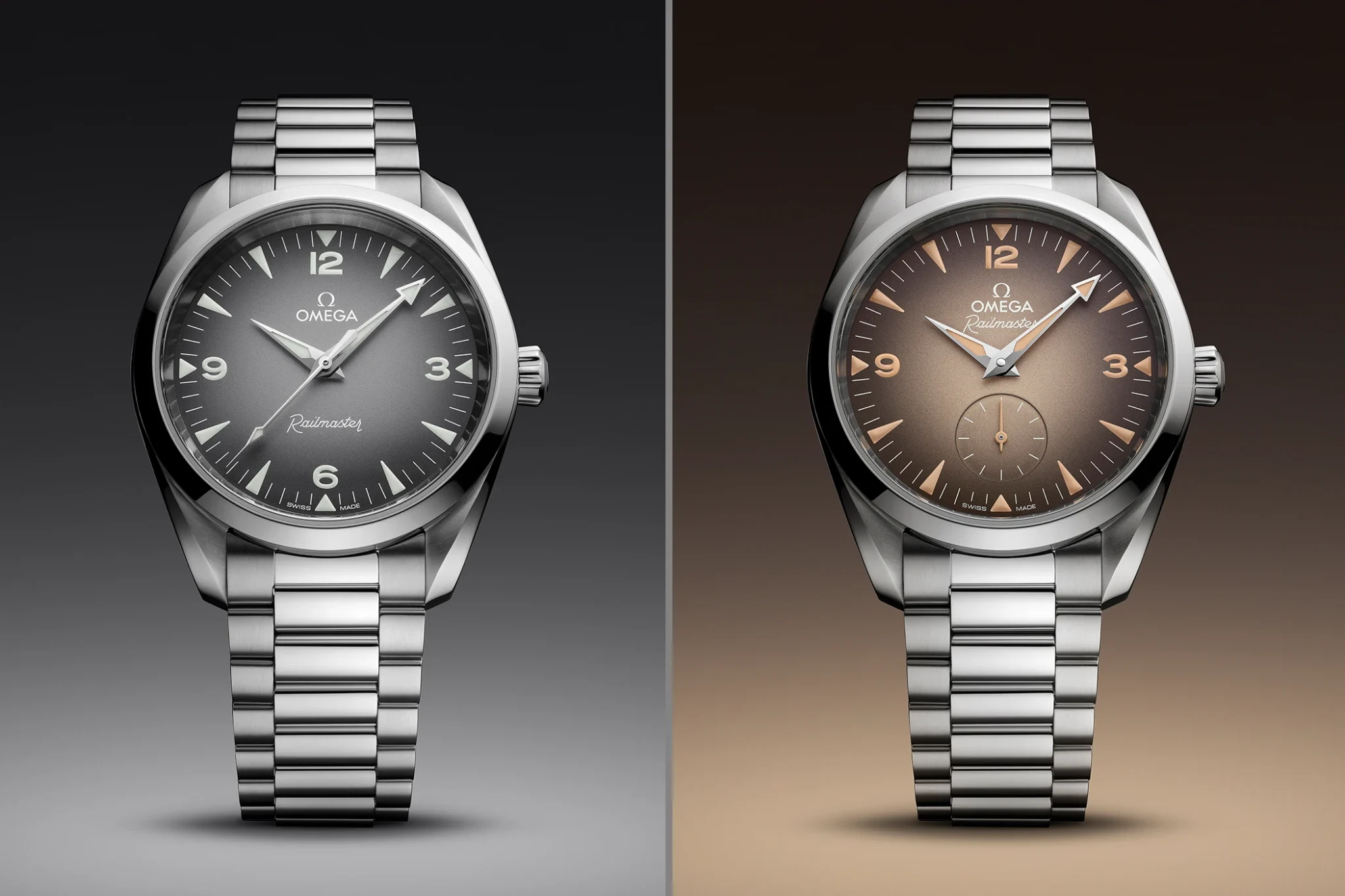
1957: The Birth of the Omega Railmaster
When the Railmaster CK2914 was launched in 1957, it formed part of the “Professional Trilogy” – a trio of tool watches that would go on to shape Omega like few others and play a defining role in the brand’s enduring success. The legendary trio – comprising the Omega Speedmaster, Seamaster 300 and Railmaster – shared a number of design features: the distinctive curved lugs, so-called “Broad Arrow” hands, and a high-contrast black dial with Arabic numerals. However, each watch served a distinctly different function and target audience.
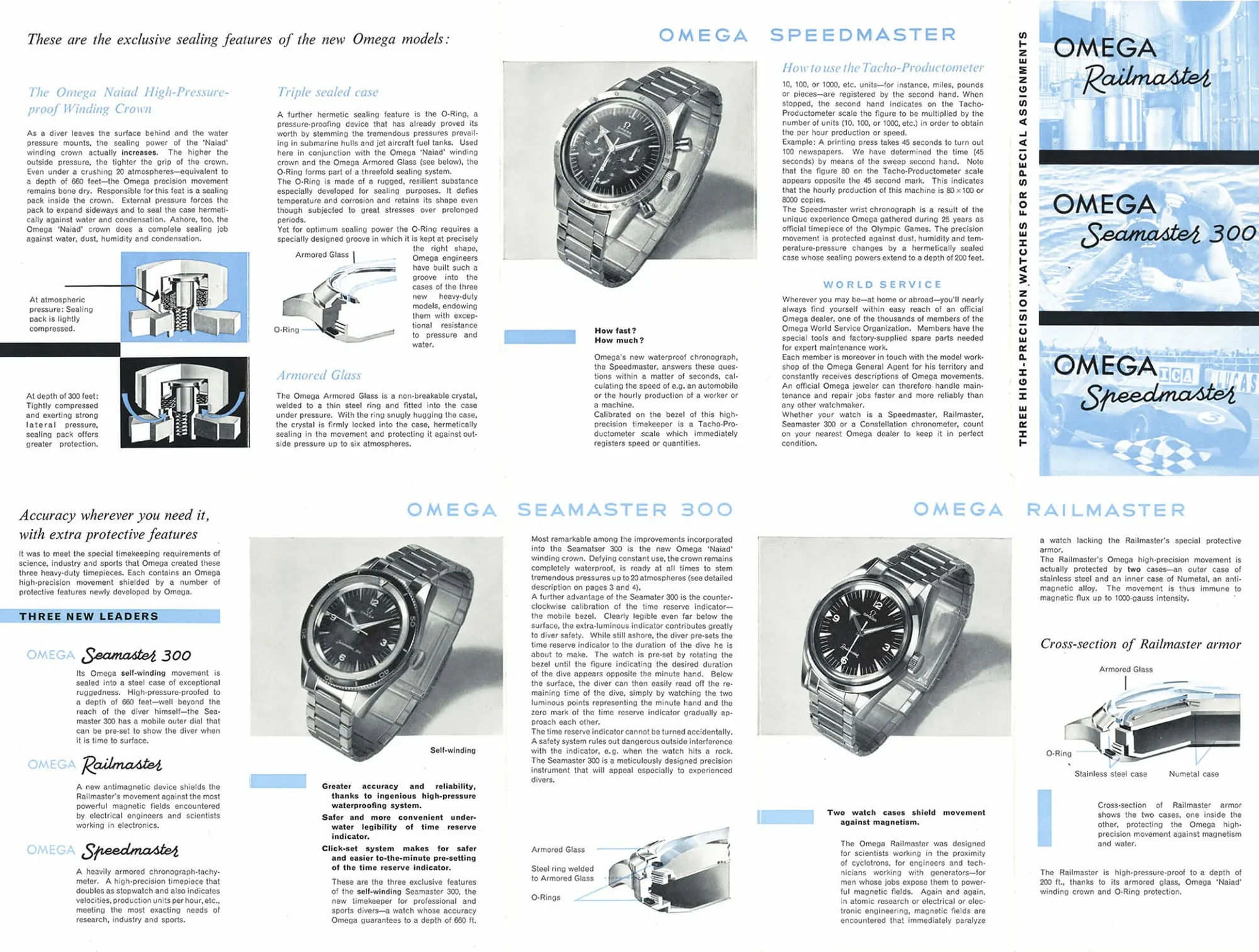
As its name suggests, the Speedmaster was aimed at racing drivers, technicians and rally teams. Its standout feature was the so-called Tacho-Productometer scale – essentially a tachymeter – which, for the first time ever, was placed not on the inner flange but on the bezel. This innovation was later adopted by watches such as the Rolex Daytona and the Heuer Carrera, enabling the wearer to measure the average speed of a moving object.
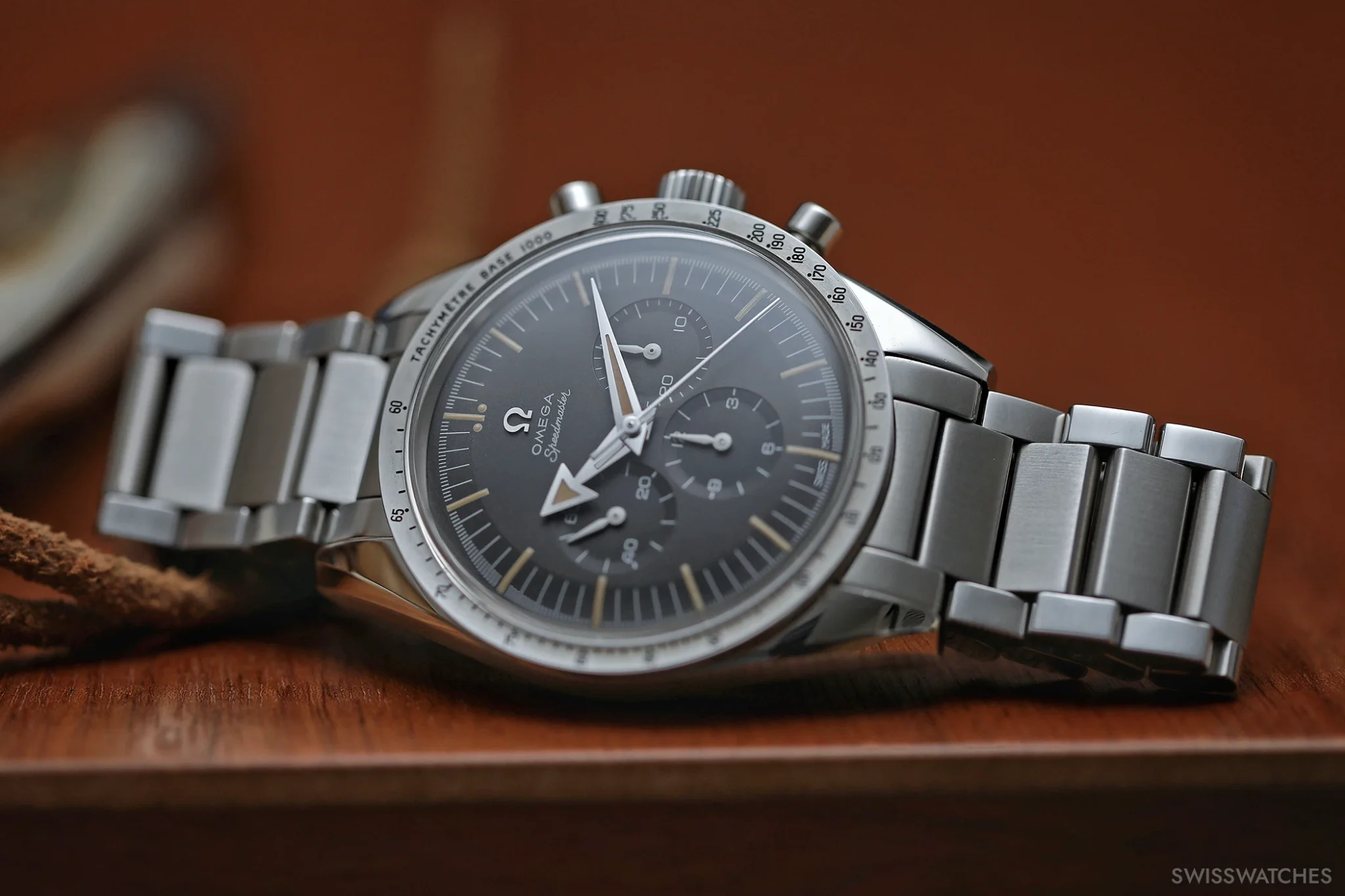
The Seamaster, the second member of the trio, was created as a professional dive watch. It featured a rotating bezel, a robust stainless-steel case and water resistance up to 200 metres. A key element was the so-called Naiad crown – a special sealing mechanism in which the crown was mounted on a spring. As external pressure increased, the crown would be pressed inwards to improve water resistance. However, the system proved unreliable over time and was eventually replaced with a screw-down crown.
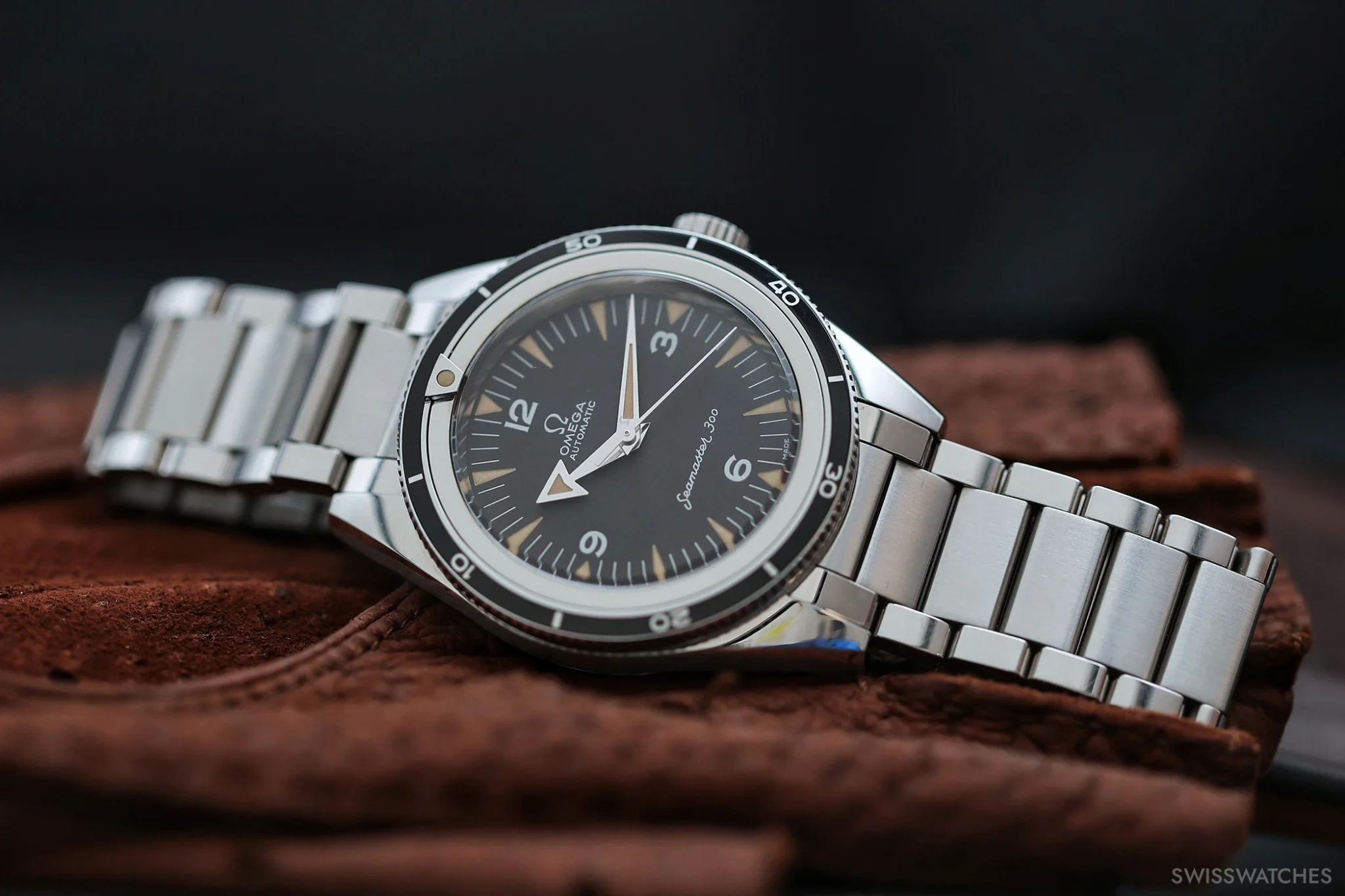
As a direct response to the Rolex Milgauss – with its distinctive lightning bolt seconds hand – and IWC’s Ingenieur, Omega introduced the Railmaster, a watch designed specifically for engineers, technicians and, not least, railway workers regularly exposed to magnetic fields. To ensure its anti-magnetic performance, Omega constructed the Railmaster with a double-case design: an outer case made from stainless steel and an inner case crafted from Mu-metal (soft iron). These components, enclosing the hand-wound calibre 284, acted much like a Faraday cage, allowing the Railmaster CK2914 to withstand magnetic fields up to 1,000 gauss – a significant improvement compared to the 60 gauss protection typically offered by watches of that era.
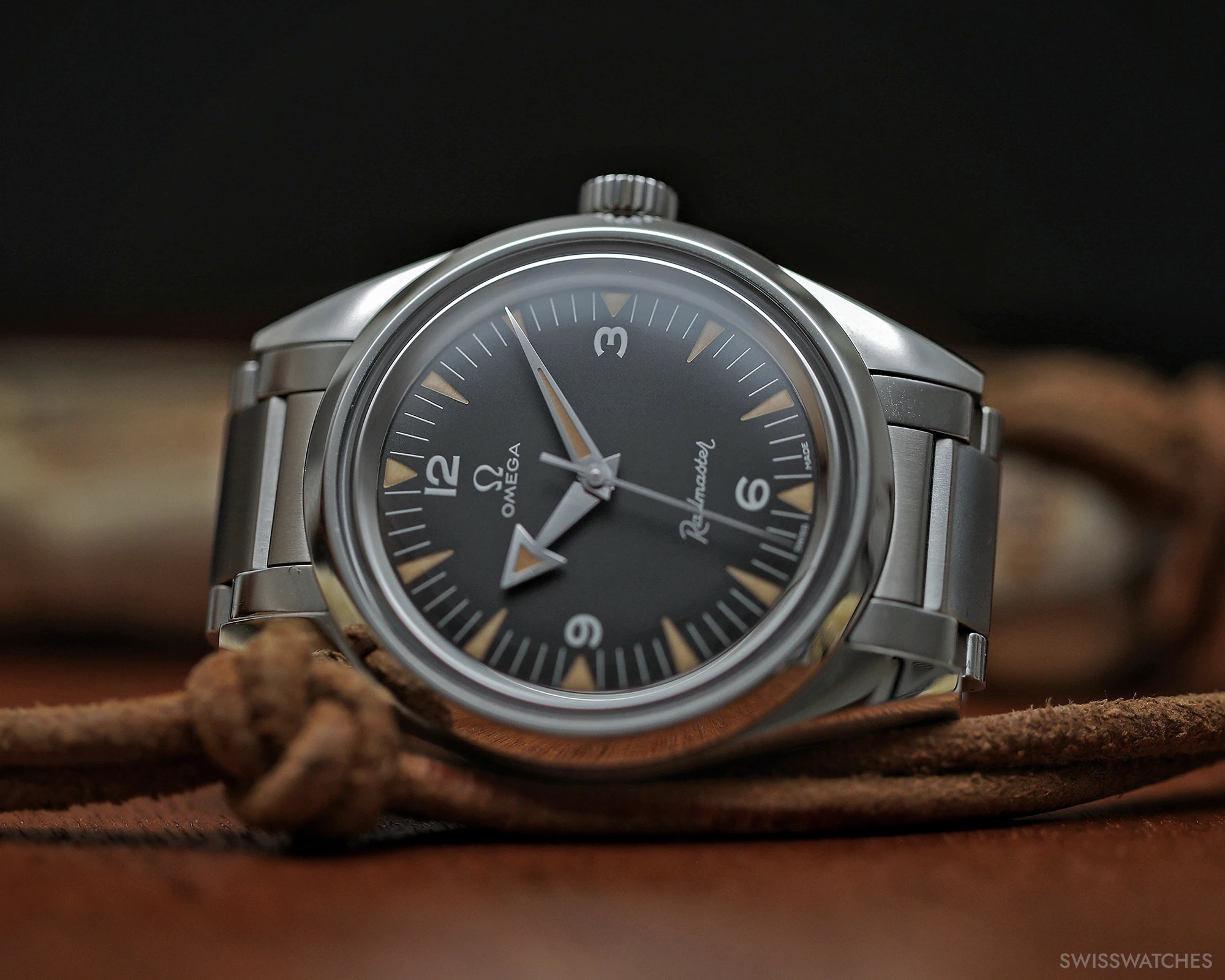
Even before the introduction of the Omega Railmaster in 1957, Omega had already established a reputation as a manufacturer of railway watches – a legacy that ultimately gave the line its name – not only in Switzerland, but also across Europe and especially in Canada. As early as the beginning of the 20th century, Omega delivered precise chronometers to Canada that met the demands of the country’s railway system. Inside these timepieces were the CCR and CCCR calibres, also known as the “Canada” calibres, which were produced between 1905 and 1911. Visually, Omega’s railway watches also stood out: many of the early Lépine-style models were intricately engraved with detailed depictions of trains and railway scenes.
Yet while the Speedmaster transitioned from a racing chronograph to a spacefaring instrument thanks to its association with the Moonwatch legacy, and the Seamaster 300 evolved into one of Omega’s most enduring and significant models through its use as a military diving watch, the Railmaster was never able to establish a clearly defined identity. Its intended function – serving scientists and engineers operating in electromagnetically charged environments – was simply too specialised to garner broad appeal. As a result, production ceased after just six years, in 1963.
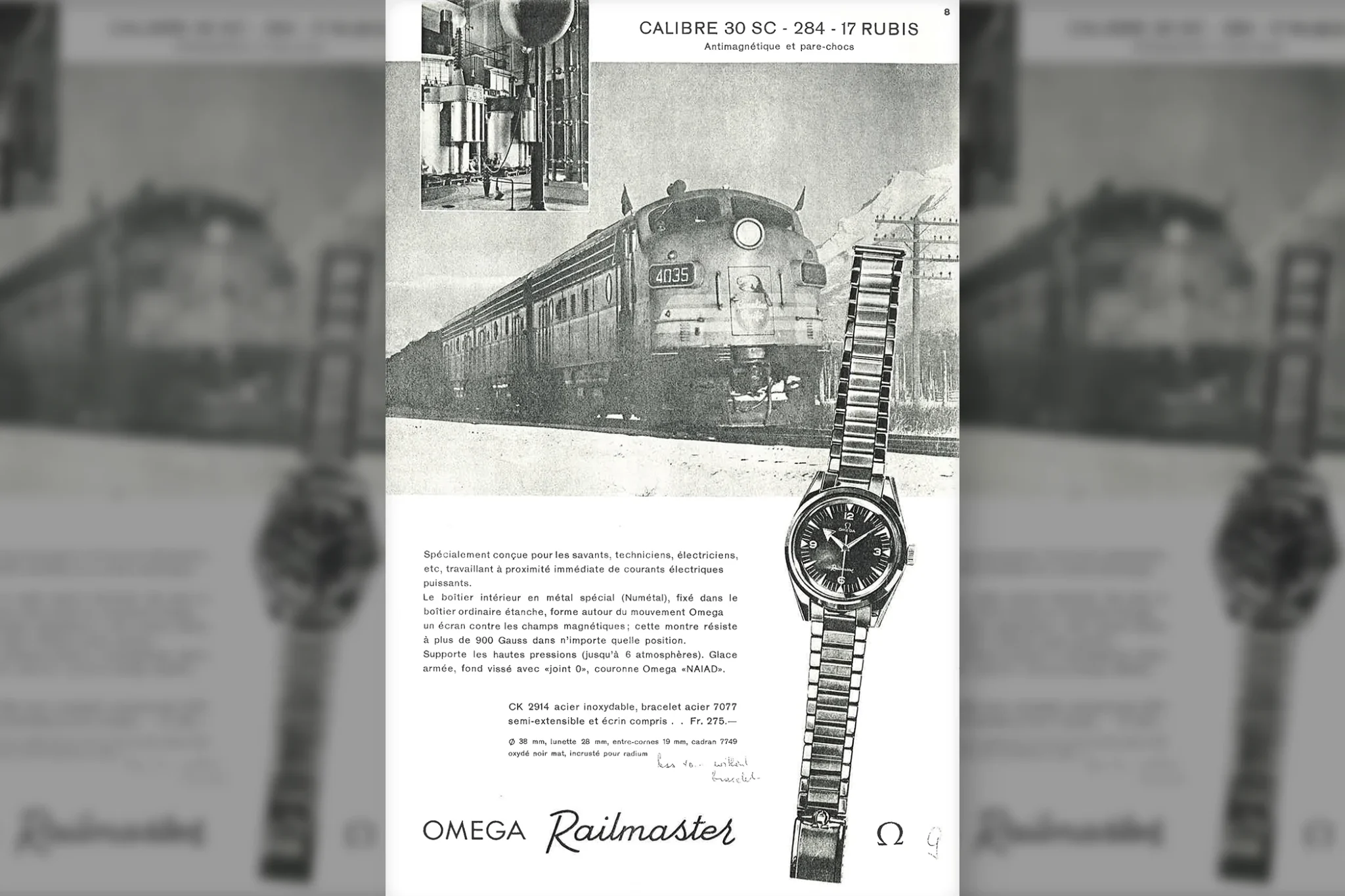
2003: The First Reissue – The Railmaster in the Aqua Terra Case
After the name “Railmaster” had been absent from Omega’s portfolio for nearly four decades, the brand decided in 2003 to bring the model back from obscurity – alongside the launch of the first Aqua Terra. As part of this revival, Omega presented the Railmaster in a range of case variants based on the Aqua Terra design. These models featured automatic Co-Axial calibres and came in case sizes of 36 mm, 39 mm, and 42 mm.
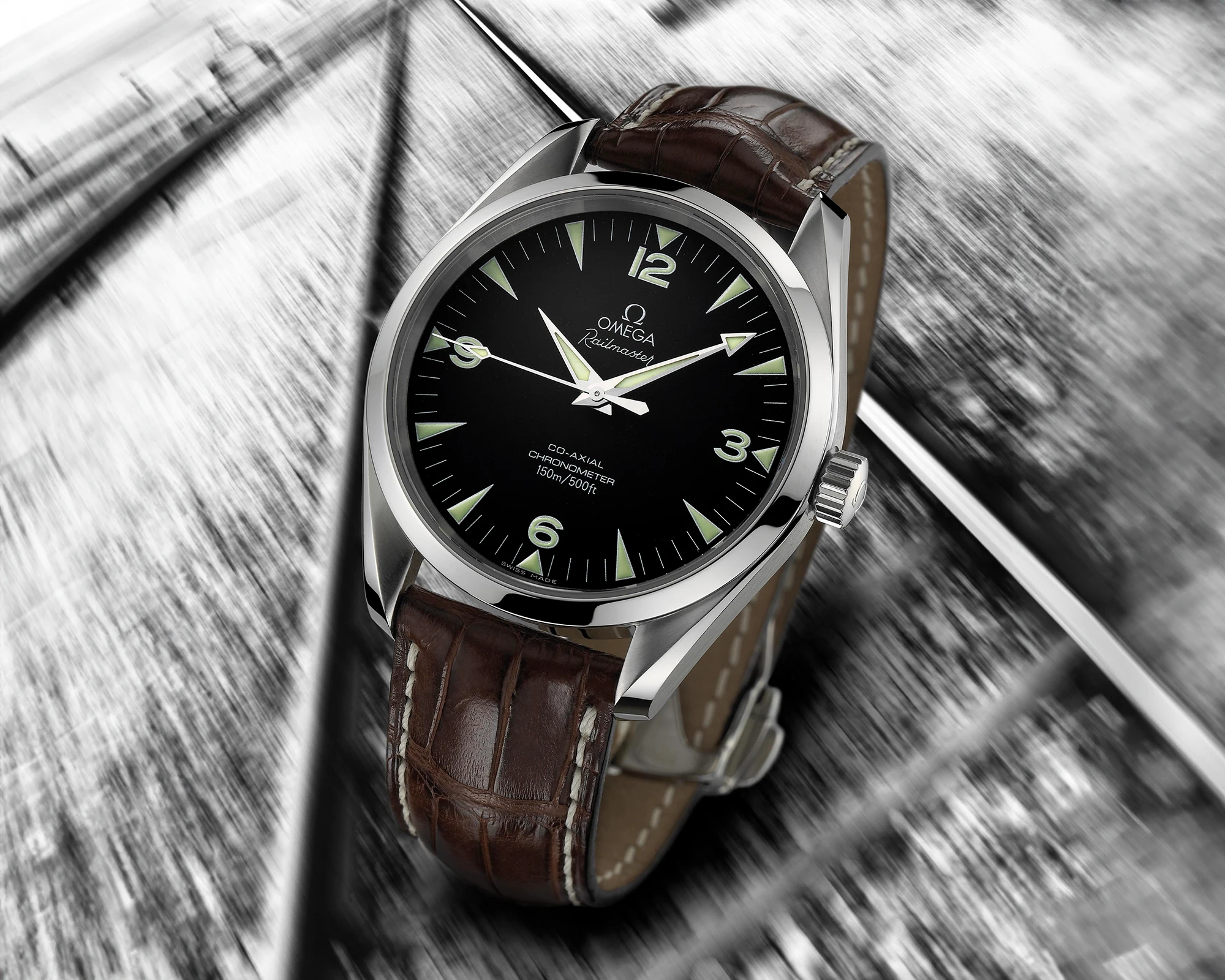
In 2004, the collection was joined by another version: a hand-wound, chronometer-certified model equipped with calibre 2201 (Ref. 2806.52.37). This XXL edition had a bold 49.2 mm case diameter and featured a small seconds display at 6 o’clock – a detail that would once again become relevant in this year’s releases. Yet despite these efforts, the Railmaster once again failed to gain lasting traction, and production was discontinued for a second time in 2012.
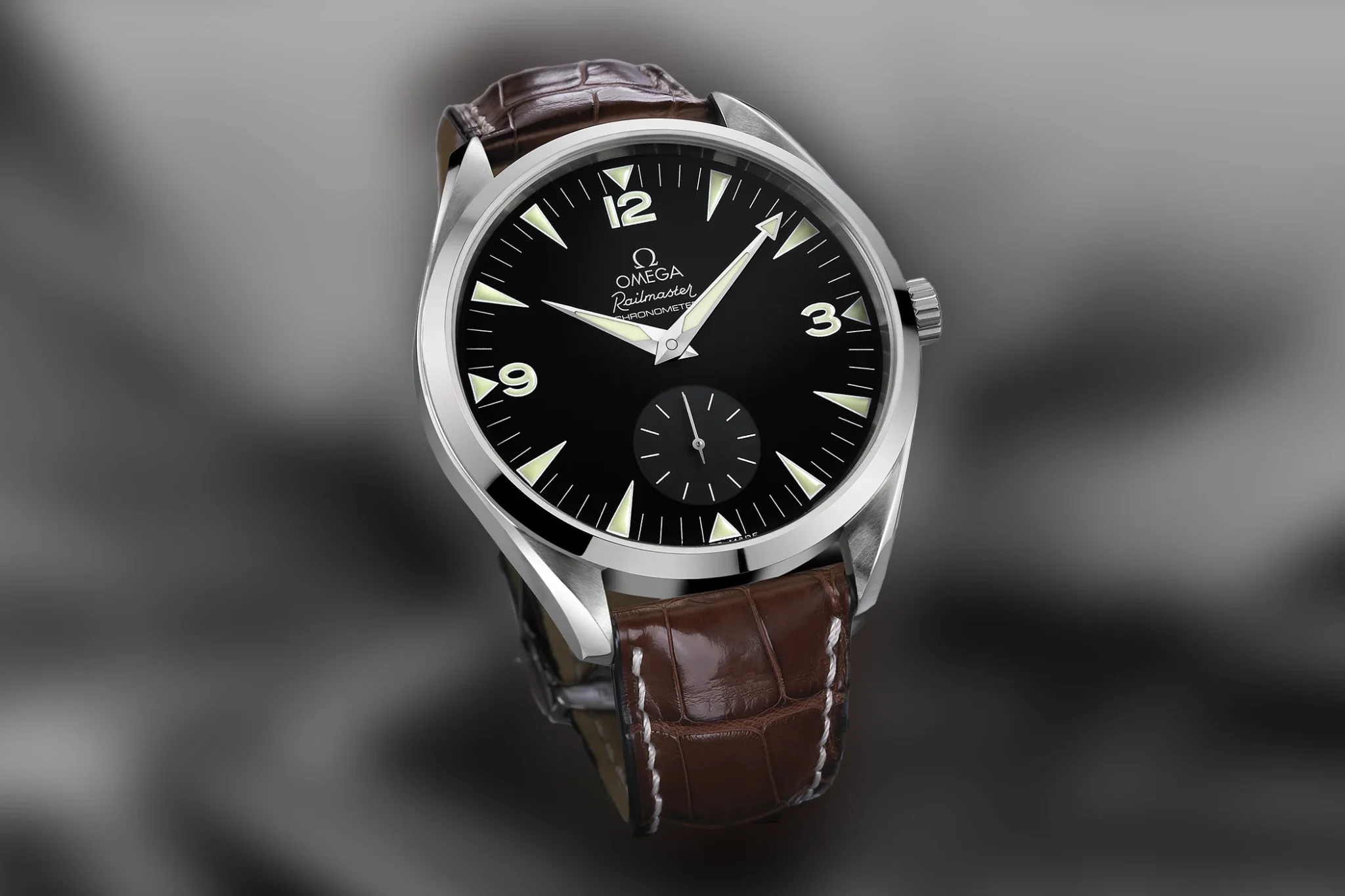
2017: Two New Omega Railmaster Models
The year 2017 saw the introduction of two new Railmaster references. Firstly, Omega launched the Seamaster Railmaster – a watch housed in a fully brushed 40 mm Aqua Terra case, combining the vintage charm of the original model with contemporary Omega design elements. The dial featured vertical lines that mimicked the appearance of brushed steel, adding texture and depth. A railway-style minute track encircled the dial, framing slim Arabic numerals and a crosshair motif at the centre.
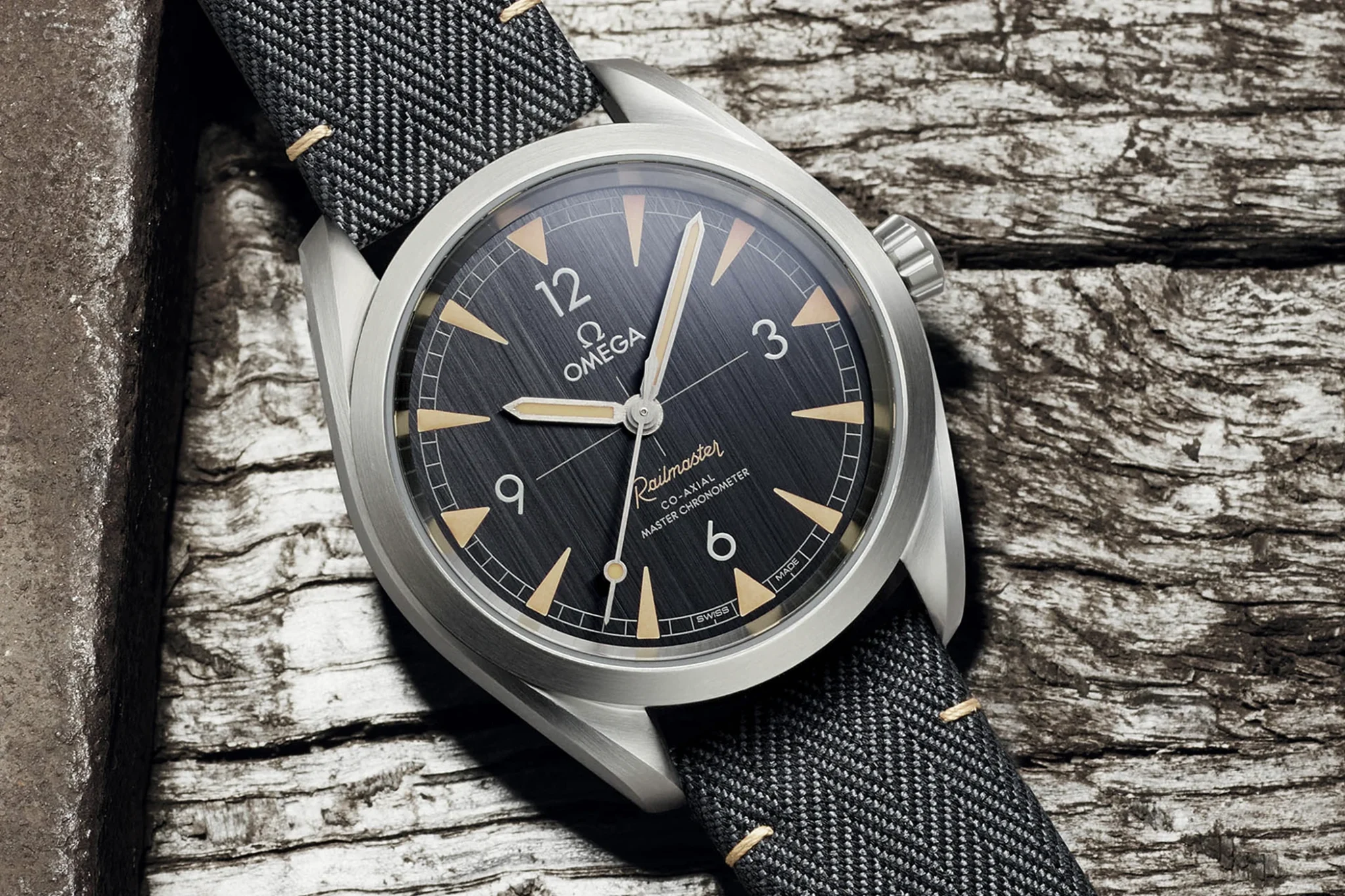
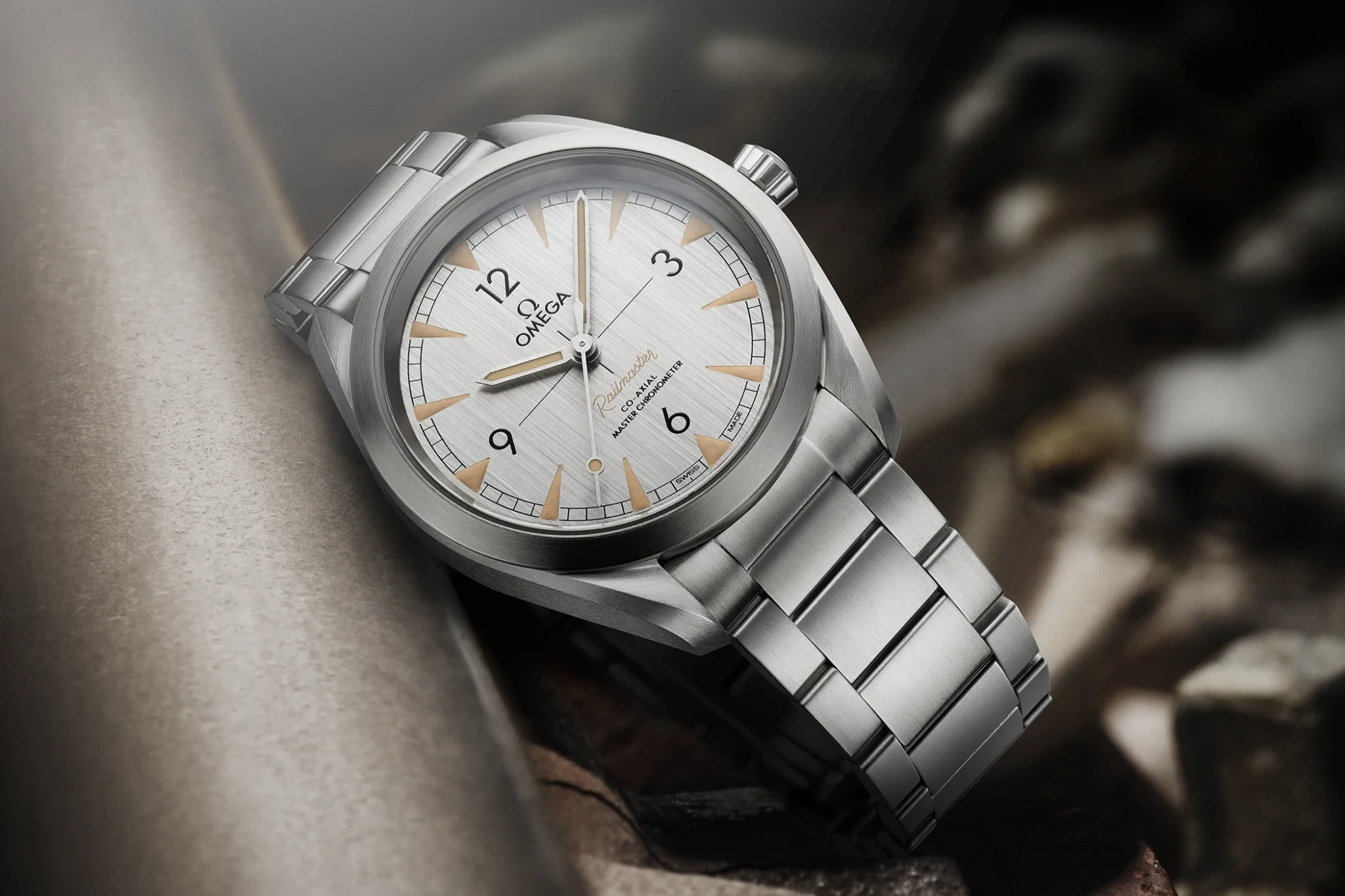
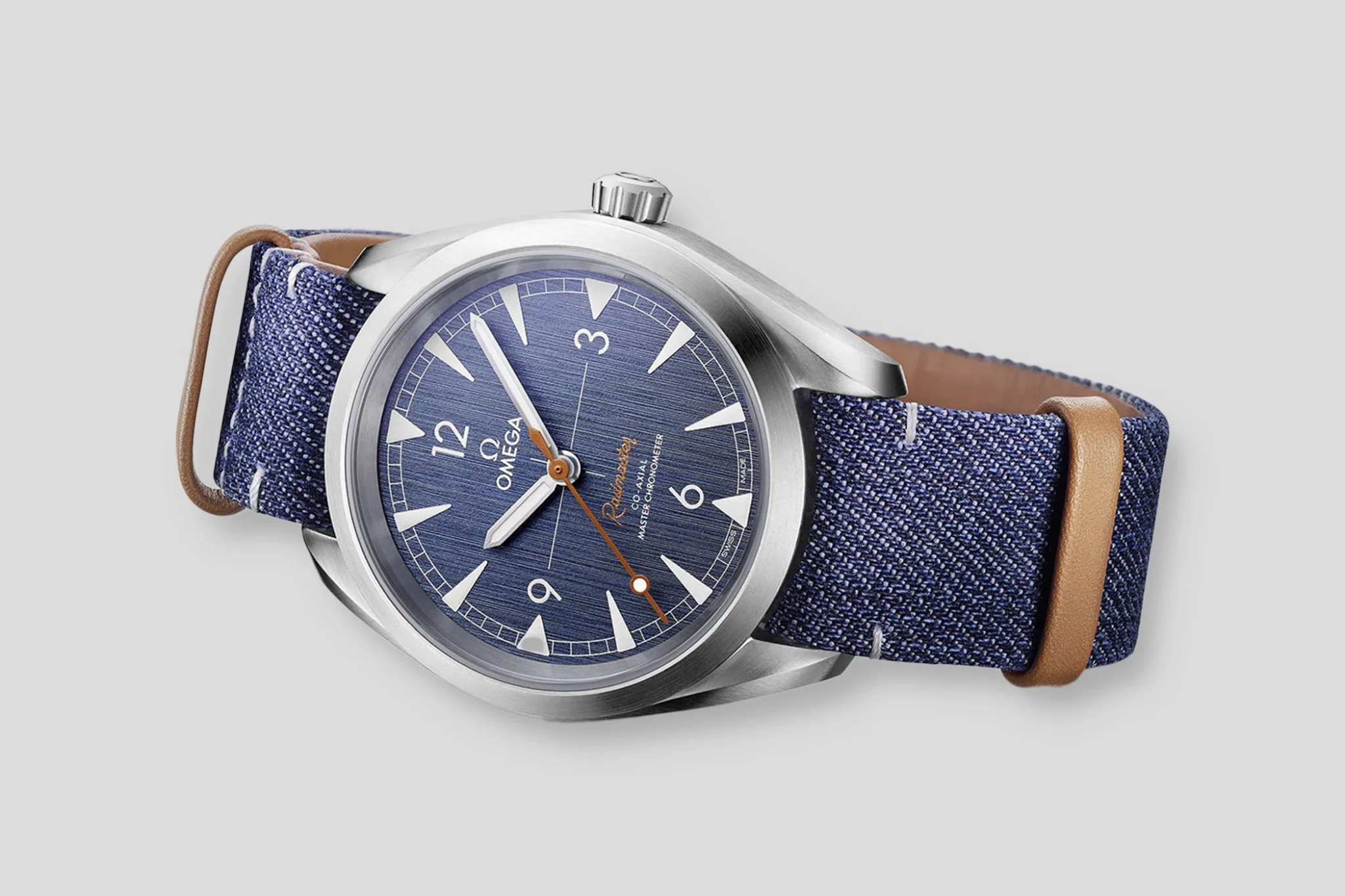
During its production run, which continued until 2024, the Seamaster Railmaster was offered in three versions: Ref. 220.10.40.20.01.001, with a dial that shifted between black and dark grey depending on the light; Ref. 220.10.40.20.06.001, featuring a light grey dial; and even a “denim” version, Ref. 220.10.40.20.03.001, which paid tribute to casual, utilitarian style.
The “1957 Trilogy” Omega Railmaster
The second 2017 release was part of the celebrated “1957 Trilogy” set – a collection comprising historically faithful anniversary editions of the Speedmaster, Seamaster 300 and Railmaster. Among the three reissues, the Railmaster (Ref. 220.10.38.20.01.002) stood out as the slimmest. With its case, dial, and fixed bezel all echoing the design language and proportions of the original CK2914, this model stayed particularly close to the spirit of the 1957 version. The case measured 38 mm in diameter and 12.7 mm in height – dimensions very much in line with the original.
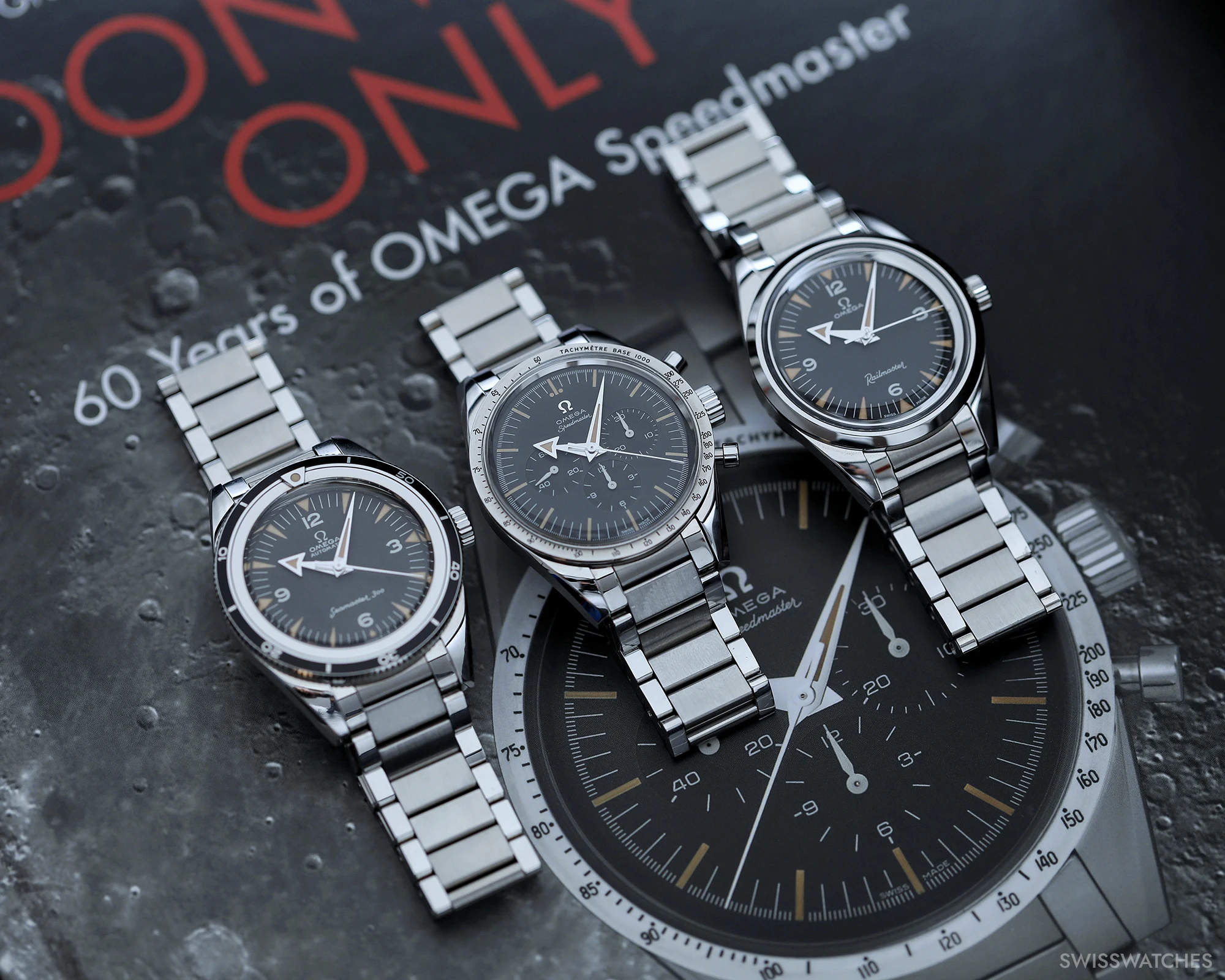
The highlight of the anniversary edition was arguably the dial, which Omega described as “tropical black.” By using vintage Super-LumiNova on the central Dauphine and Broad Arrow hands, as well as the hour markers, Omega sought to replicate the distinctive aged patina seen on vintage CK2914 models. A further nod to the original came in the form of the vintage Omega logo, placed not only on the dial but also on the crown and the folding clasp of the bracelet – which combined satin-finished central links with polished outer links.
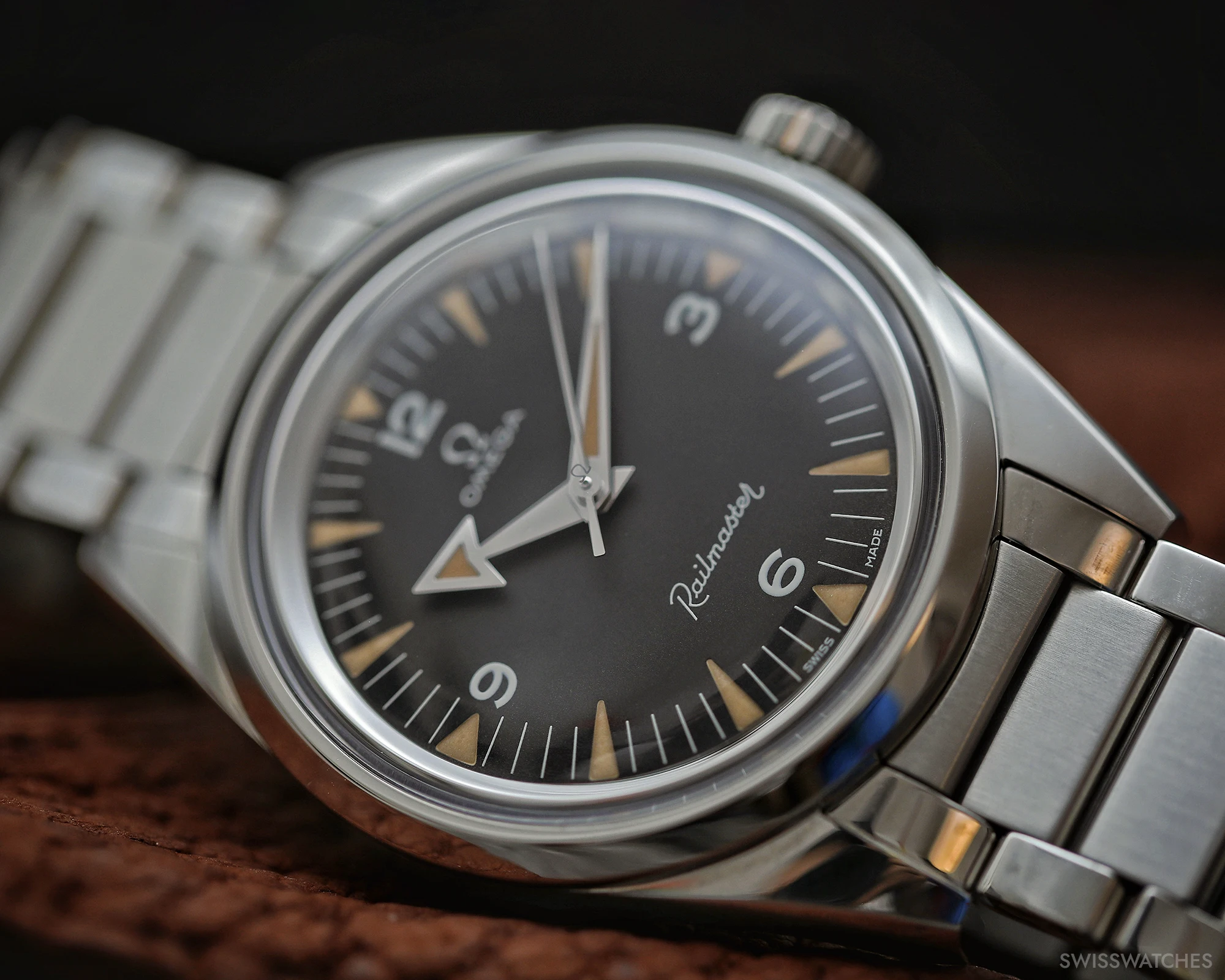
Completing the vintage aesthetic was the historic “Railmaster” lettering on the dial. Turning the watch over revealed a solid caseback engraved with a seahorse motif and “60th Anniversary” inscription, beneath which lay the automatic Co-Axial Master Chronometer calibre 8806 with a power reserve of 55 hours. The Seamaster Railmaster “1957 Trilogy” edition was limited to 3,557 pieces.
2025: The Omega Railmaster Returns Once More
A New Dial in Two Variations
After several revival attempts in recent years, the Railmaster is once again making a comeback – this time through two reinterpretations that blend historical references with a modern edge. The dial design is perhaps the most striking embodiment of what has long defined the Railmaster’s appeal: a minimalist aesthetic combined with maximum legibility, achieved through the use of characteristic Dauphine and Broad Arrow hands and sharply tapered hour markers. Both new models follow this design principle, drawing inspiration from their historical predecessors while introducing a fresh twist: green-tinged elements on a grey background and vintage brown details on a beige dial.
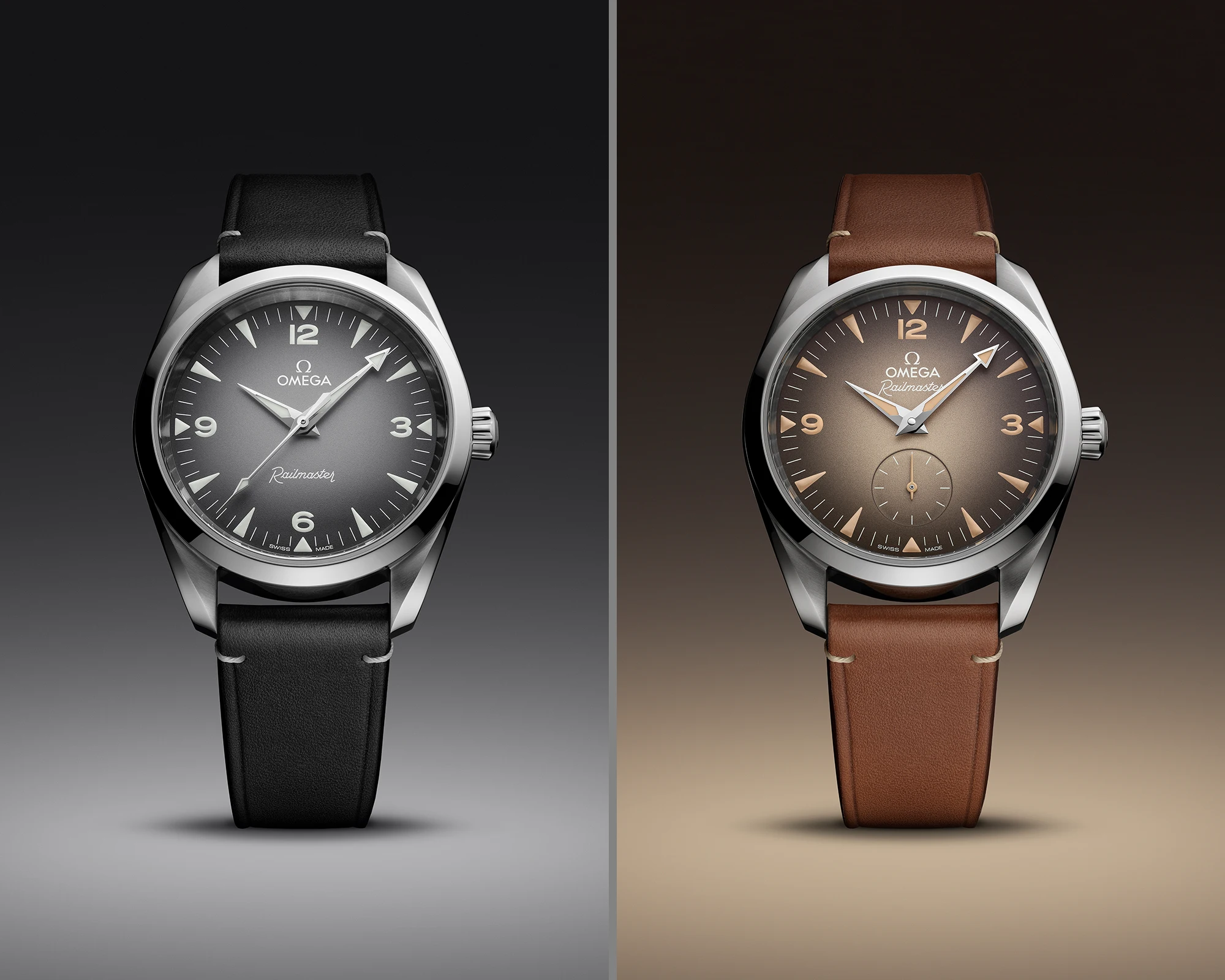
To enhance both depth and modernity, Omega has applied a fumé effect to the dials – a design technique that creates a gradient from a darker tone at the outer edge to a lighter shade at the centre. In the grey version (Ref. 235.10.38.20.06.001), the dial transitions from a rich dark grey to a lighter tone, while the beige version (Ref. 235.10.38.20.13.001) showcases the same gradient in a warmer colourway. While Ref. 235.10.38.20.06.001 features a central seconds hand, Ref. 235.10.38.20.13.001 adopts a different approach to timekeeping: it revisits the small seconds sub-dial at 6 o’clock – a configuration first introduced with the oversized Railmaster XXL (Ref. 2806.52.37) in 2004.
The Case
The latest generation of the Railmaster is offered in two versions, which, while differing in dial design, both feature a stainless-steel case with a diameter of 38 mm. The case takes its cues from the Aqua Terra line and measures 12.36 mm in height and 45 mm lug to lug. Water resistance is rated at 150 metres. Turning the watch over reveals a sapphire crystal caseback, allowing a clear view of the movement within.
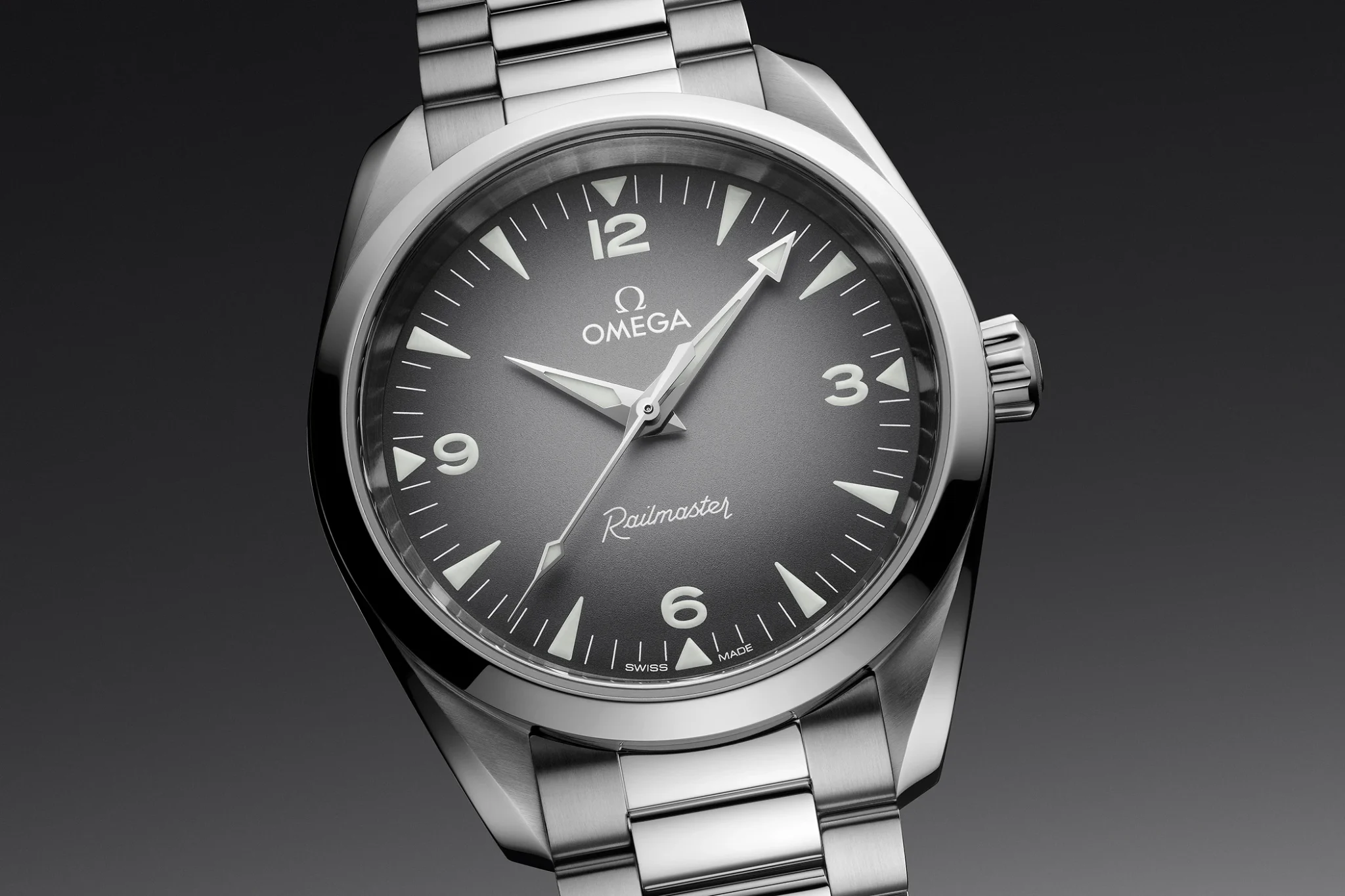
Each dial is complemented by a strap that matches its colour scheme. The grey version is available either on a black leather strap or a stainless-steel bracelet, while the beige version comes with a brown Novonappa leather strap or, likewise, a steel bracelet.
The Movement
Inside the new Railmaster models are two different movements: the grey-dial version is powered by the automatic Co-Axial Master Chronometer calibre 8806, already used in the 2017 Seamaster Railmaster and the “1957 Trilogy” anniversary edition. The beige model with its small seconds display, on the other hand, houses the automatic calibre 8804.
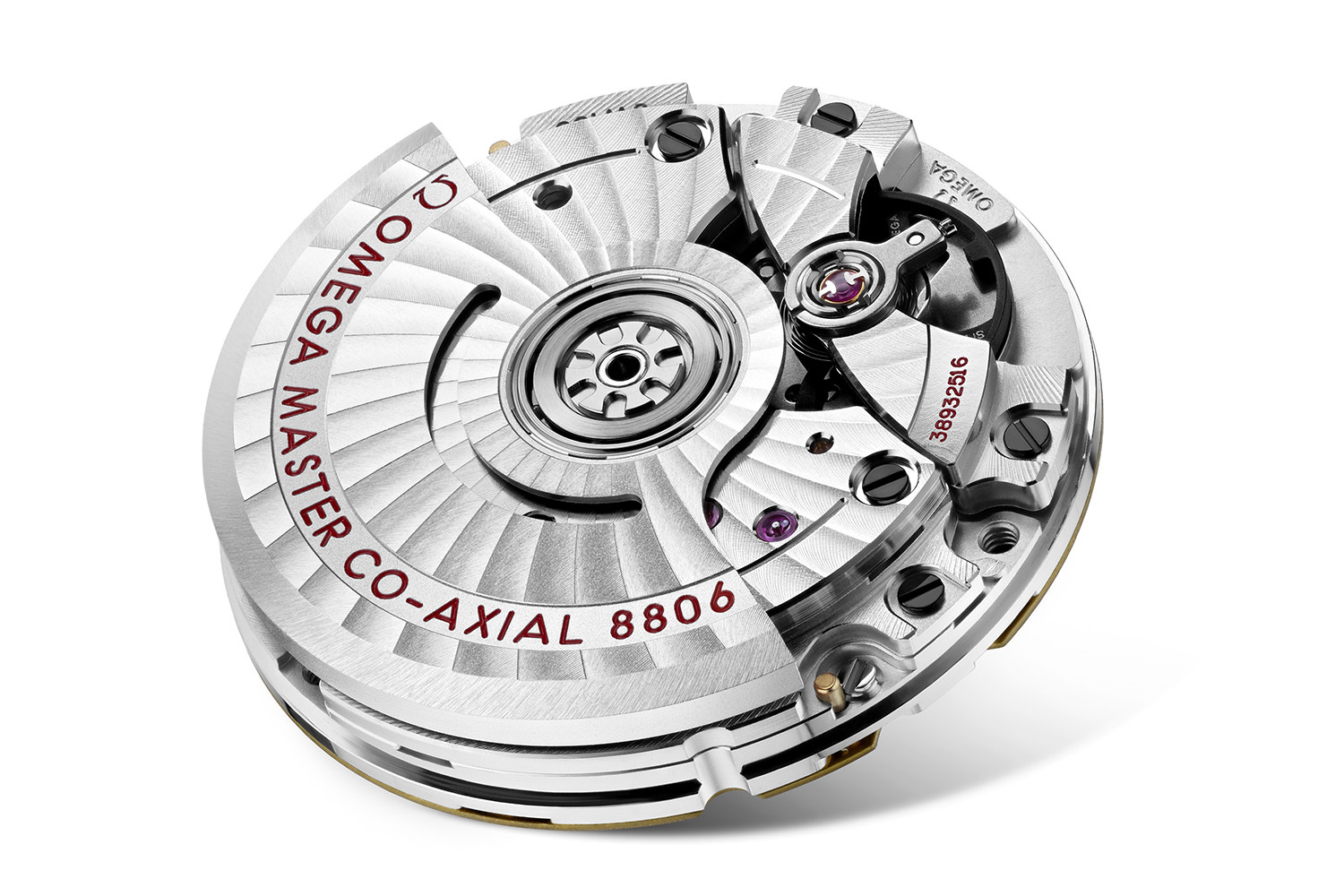
Not only are both calibres vastly more anti-magnetic than the original hand-wound calibre used in the CK2914 – offering resistance up to 15,000 gauss versus the original 1,000 gauss – they also bear the Master Chronometer certification. Introduced in 2005 by Omega in collaboration with METAS, the Swiss Federal Institute of Metrology, this certification tests not only precision in six different positions (with a target deviation between 0 and +5 seconds per day), but also real-world durability, including water resistance and resistance to strong magnetic fields.
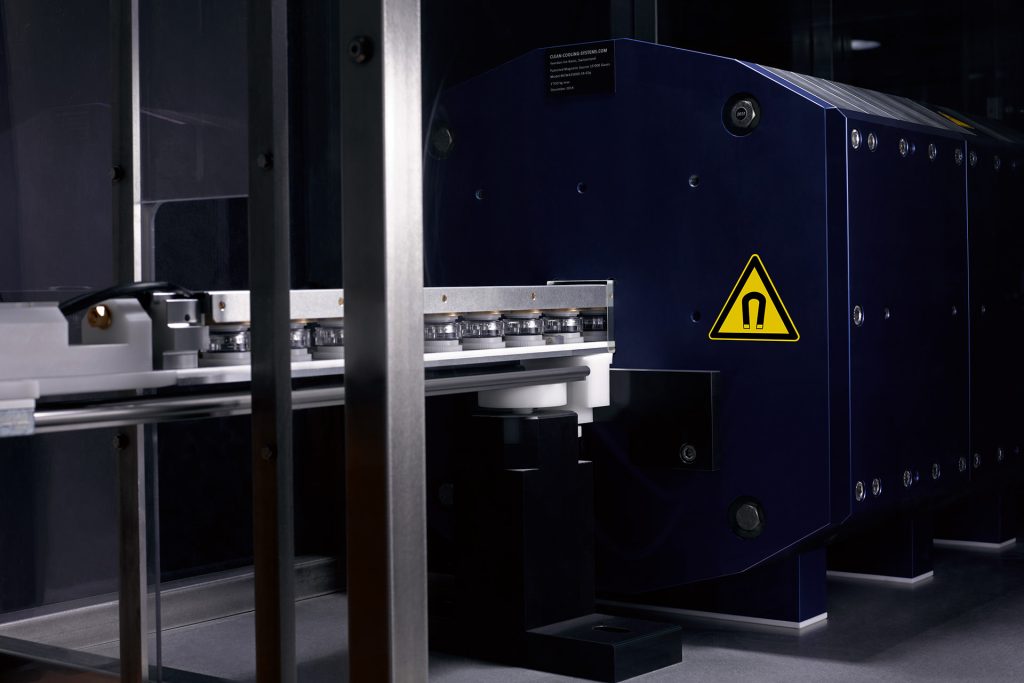
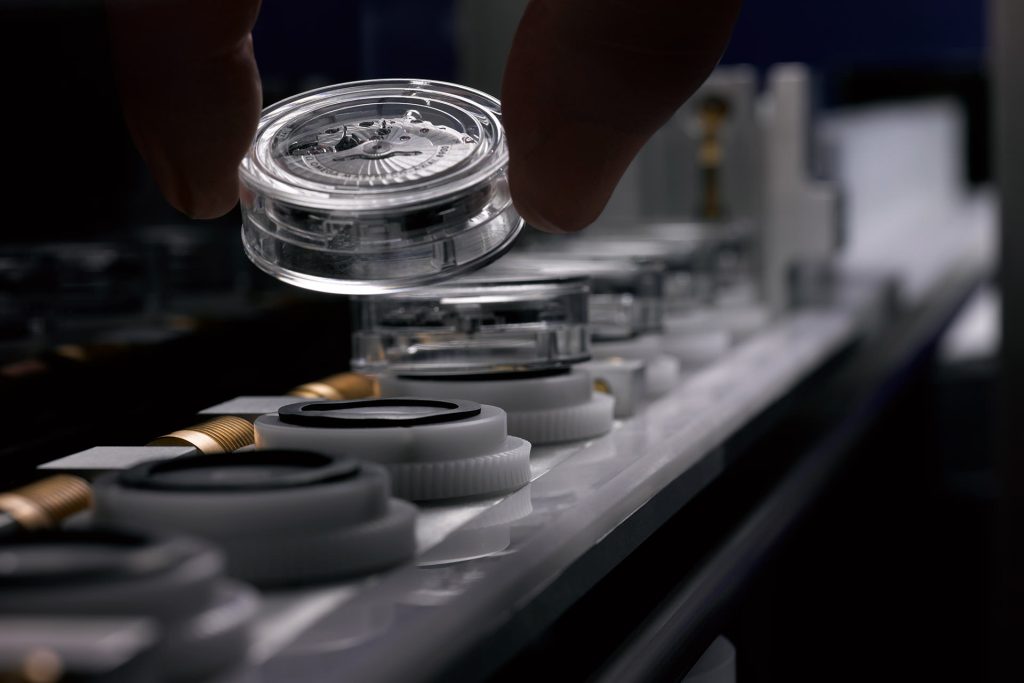
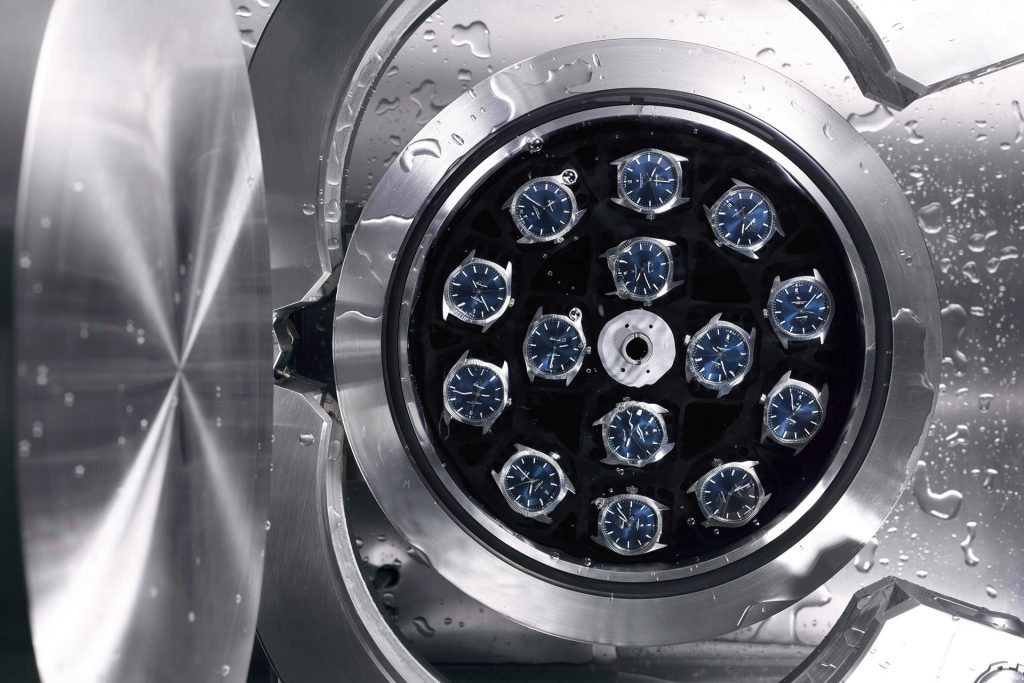
Unlike COSC certification, which only assesses the accuracy of the movement itself, METAS certification verifies the performance of the entire watch – including power reserve, magnetic resistance and water resistance. Calibre 8806 offers a power reserve of 55 hours, while calibre 8804 provides up to 60 hours. As is typical for movements with a silicon balance spring, both operate at a frequency of 25,200 vibrations per hour.
Pricing
The grey Omega Railmaster (Ref. 235.10.38.20.06.001) is priced at €6,000 on a stainless-steel bracelet and €5,600 on a leather strap. The beige version (Ref. 235.10.38.20.13.001) is slightly more expensive, coming in at €6,600 on a bracelet and €6,200 on a leather strap.
